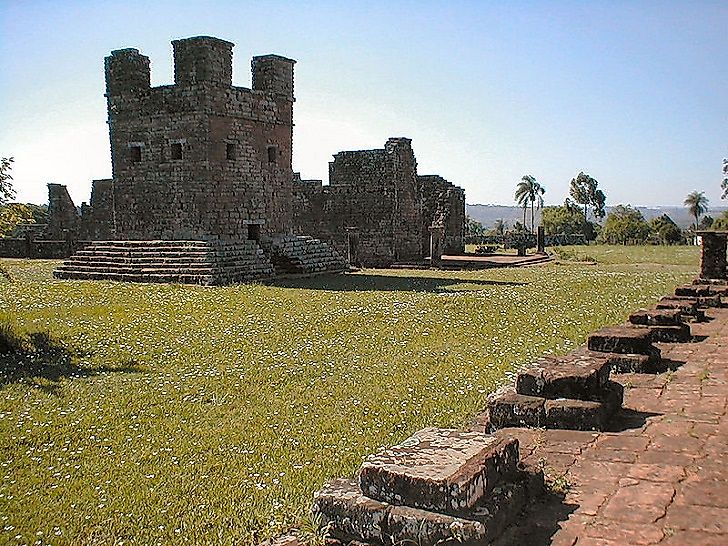La Santísima Trinidad de Paraná and Jesús de Tavarangue Jesuit Missions, Paraguay

In the 1600s and 1700s, Jesuit missionaries successfully converted most of the inhabitants of the Rio de la Plata Basin to Catholicism. The Jesuit missionaries arrived in the region of Paraguay in the 16th Century mainly to spread Christianity and protect the natives from the American slavery and colonization. They established 30 missions and settlements in the regions that are now part of present-day Paraguay, Bolivia, and Argentina. In Paraguay, The Jesuit Missions of Trinidad and Tavarangue are religious missions established by the missionary Christians. UNESCO declared the two missions as part of the world heritage sites in 1993.
5. Description and History -
The first group of Jesuit missionaries arrived in the area around what is now Tucuman, Paraguay between 1586 and 1587 at the request of Bishop Alonso Guerra. They started their first missionary work and building of towns in missions regions in Paraguay and founded thirty mission centers in territories belonging to present-day Paraguay, Argentina, Brazil, and Bolivia. They formed towns that were self-reliant in the native's lands and learned the Guarani language so as to use it in literature. Apart from knowledge and religion, they also structured rules of public orderliness, culture, education, and society that still have an impact in the present-day Paraguay.
4. Tourism and Education -
The Jesuit missions' ruins were rediscovered almost two centuries after the expulsion of the Jesuits. The ruins, starting as small sightseeing sites have developed to be among Paraguay's main tourist attraction sites. Among the tourist attractions in the sites are statutes of renowned personalities like the saints and virgins that are carved in poly-chrome wood. Their features strongly resemble those of the Guarani men and women. They also serve as reference sources or students who are learning about the history of Paraguay and the organization of the Jesuits community.
3. Uniqueness -
Unlike many other colonial missionaries of their era around the world, these Jesuits missionaries were not desiring to see the natives stop practicing their traditional ways of life and adopt European customs. Instead, they came to spread Christianity and protect the people from the looming threat of the arrival of the Spanish colonial system of encomienda, which was in essence a form of slavery. The people retained many of the Guarani traditions and encouraged them to cultivate their indigenous yerba mate which is still a product that represents their region today. They combined native elements with Christian traits and symbolism which exhibit influences of the Bernini, Romans, and Greek as part of a pioneering process of assimilation. Their mission complexes were attached to settlements forming a unique urban scheme.
2. Natural Surroundings, Sights, and Sounds -
The Jesuits had a flair for art, and the mission of Jesus de Tavarangue has expressions of architecture that are distinguished by their combinations of architectonic styles, reflected in the use of trefoil arches in the Christian-Arab traditions. The Mission of Santísima Trinidad del Paraná consists of a complex of buildings that cover an area of about eight hectares. The large stone church has an elegant cupola and a stunning decoration, built in the design of a Milanese architect Juan Bautista. Other surviving evidence includes small church, a school, an arcade, cemeteries, kitchen allotments, cloche, native houses, and workshops.
1. Threats and Conservation Efforts -
The sites have survived as archaeological ruins after they were abandoned following the expulsion of the Jesuits from the Rio de la Plata region in the 18th Century. The threats to the properties are predominantly due to meteorological attacks like storms and tornadoes. Modern communities that surround the two ruins threaten them with urbanization pressure. Besides, there are threats from potential tourism pressure, incapacitated conservation procedures, insufficient financial and human resources, and lack of management and legislation. UNESCO declared the two ruins as a cultural world heritage site and their ownership is with the conservative and tourism agency, which oversees the management of the properties. There are also various restoration projects underway, which aim at repairing the damaged buildings. The world heritage committee holds conservation workshops aiming at the preservation of the ruins.











